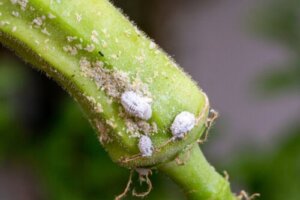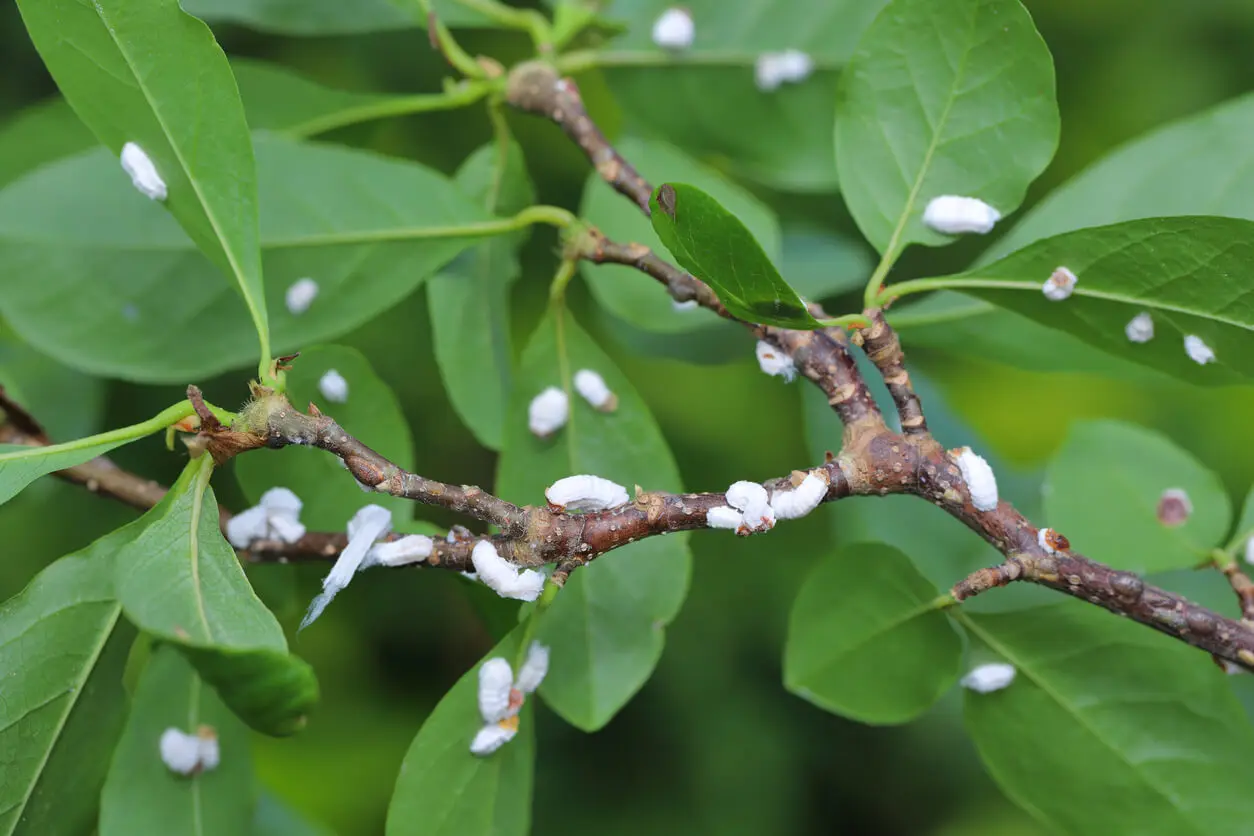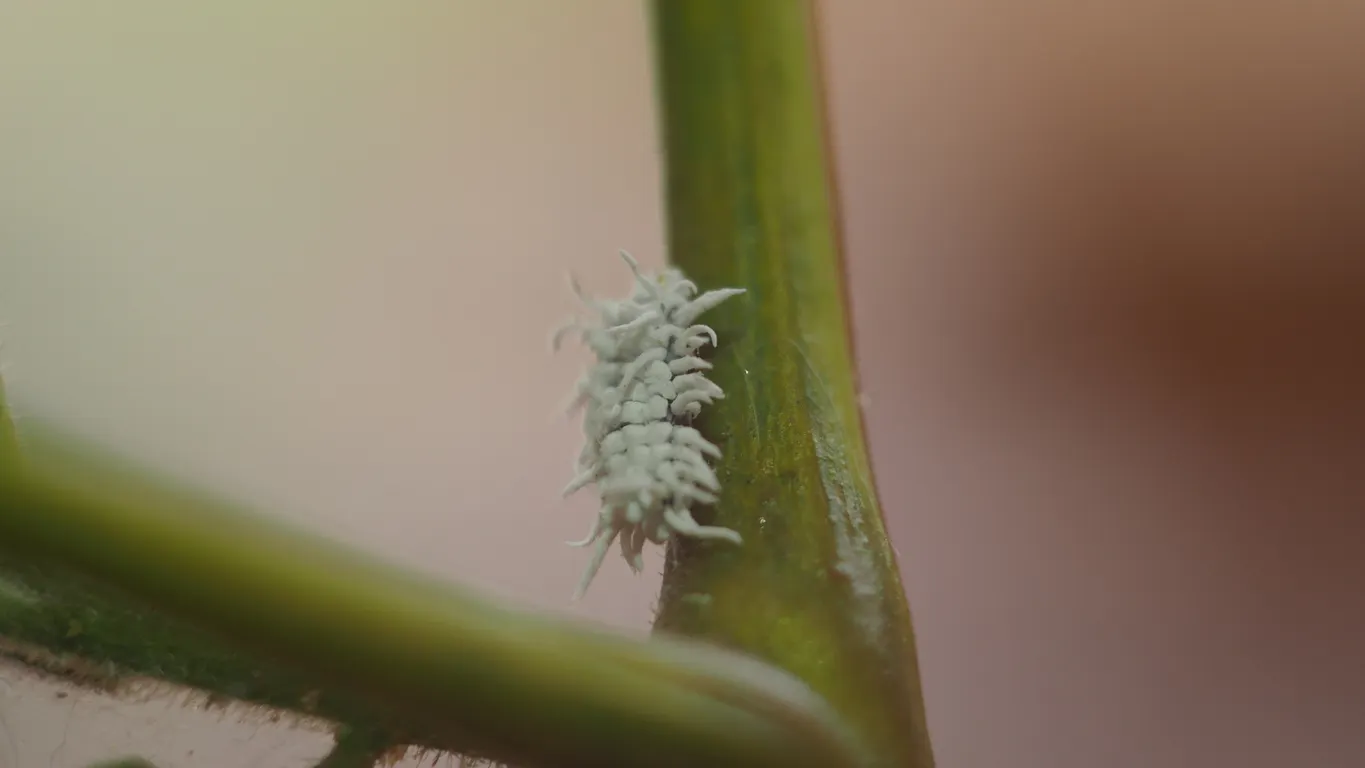How to Eliminate Cottony Mealybugs from Your Plants

Pests in gardens and orchards are a headache. The problem is that if we don’t detect them in time, they spread and infect all plants, both outdoors and indoors. In this article, we’re going to take a look at how to eliminate the mealybugs in a simple and effective way.
This pest is one of the most common, although the good news is that there are several ways to eradicate it. Stay to the end and learn how to eliminate it.
What are mealybugs and how can they be identified?
Its scientific name is Planococcus citri and it’s known as “cochinilla algodonosa” or cotonet, because of its cotton-like appearance. This is an insect found on different species of plants, preferring citrus fruit trees and vegetables. There are several types of mealybug, such as the ribbed, long-tailed, and gray louse, among others.
It belongs to the group of polyphagous pests.
This type of mealybug is oval-shaped and is covered by a white or yellowish substance. It feeds by sucking the sap from the plants it attacks.
In this way, the plant is weakened and the mealybug becomes stronger. Not only does it take food from the plant, but it also facilitates the proliferation of viruses and fungi.
The male and female of this mealybug species are different and have very different functions. The female is larger and secretes this whitish substance to protect the eggs, which can grow to 2000 eggs. The male, on the other hand, is smaller, lives very little time and practically its only function is to fertilize the female.
Its presence on plants is more common during the summer and spring months. One of the main problems is that it’s very difficult to detect them at an early growth stage. This is because they tend to be located in areas of the plant that are not very visible.

We think you may also enjoy reading this article: Why Do Geranium Leaves Turn Yellow? 8 Possible Reasons With Solutions
How to eliminate cottony mealybugs with natural pesticides
First, you will have to detect the presence of the mealybug. If you notice that the plant has yellow leaves, loses flowers and fruits, and has a bad general appearance, it’s probably infected. Also, mealybugs attract ants, so be on the lookout for these insects.
In this case, check the back of the leaves, their corners, and hidden twigs. As soon as you notice the white substance produced by mealybugs, act quickly.
Potassium solution
One of the natural insecticides is potassium soap. When it comes in contact with the pest, it softens its cuticle and ends up suffocating it.
Kerosene oil
This is a natural insecticide made from kerosene. It acts by forming a film that protects the plant.
It has a long-term effect and is very effective. In general, it’s widely used in crops where there are olive and lemon trees.
Diatomaceous earth
In this case, when it comes into contact with the pest, it dries it. Although it’s not the most used method to eliminate mealybugs, it’s excellent to eradicate them from cacti and succulents.
Like this article? You may also like to read: Avoid These 7 Gardening Mistakes and Make Your Plants Bloom in Spring
Pyrethrin
The substance is obtained by mixing organic compounds of natural origin that come from certain flowers. We always recommend that you carefully read the labels of each of these products to work with the right doses and in a safe way.
How to eliminate the mealybug with natural remedies?
There are home methods you can use to combat the mealybug and keep it away from your home. Here are some of them.
Neem oil
Neem is a vegetable oil that has powerful insecticidal power. You have to dissolve a tablespoon in a medium bottle of water and add a few drops of liquid soap. Spray the plants with this preparation three times a week.
Soap
For this option, you will need to dilute liquid soap in drinking water and add burning alcohol. The three ingredients are used in equal parts.
Put the preparation in a container with a sprayer and apply it to the affected area. Once a week is fine.
Ladybugs
This is one of the most picturesque options. The ladybug Cryptolaemus montrouzieri loves to eat mealybugs, so just go to a special store and buy specimens of this insect. After a few days, you will have no more mealybugs!

Alcohol
In this case, the suggestion is to use alcohol when watering the plants. You will use isopropyl alcohol with water and water the stems and leaves that you notice are diseased, 2 times a month. Although this is a very effective method, it isn’t recommended for delicate plants, but rather for cacti.
Better to prevent than to eliminate mealybugs
We hope you can implement some of these methods that we have shared with you to eradicate the pest and restore the health of your plants. Remember that prevention is one of the best tools. In this sense, don’t overwater them, prune them frequently and keep an eye out for ants.
All cited sources were thoroughly reviewed by our team to ensure their quality, reliability, currency, and validity. The bibliography of this article was considered reliable and of academic or scientific accuracy.
- Viñuela, E., Handel, U., & Vogt, H. (1996). Evaluación en campo de los efectos secundarios de dos plaguicidas de origen botánico, una piretrina natural y un extracto de neem, sobre Chrysoperla carnea Steph.(Neuroptera: Chrysopidae). San. Veg. Plagas, 22(1), 97-106.
- Edgar, O. E. (1997). Efectividad biológica de insecticidas no convencionales metarhizium anisopliae y la piretrina para el control de plagas del maíz.
- Nicolás, H. C. (2011). Ventajas y desventajas de los insecticidas químicos y naturales. Universidad veracruzana. Facultad deficiencias químicas, 74.
- Delgado Jiménez, J. A., & Espinoza Lozano, L. (2021). Uso de insectos nativos en el control biológico de las cochinillas algodonosas presentes en las plantas ornamentales dela ciudad de Guayaquil(Doctoral dissertation, ESPOL. FCV.).
- Coto, J. L. P. (2015). Cochinilla acanalada: Icerya purchasis. Revista Agroecológica de Divulgación, (22), 55-55.
- Malagón, J., & Monzó, J. C. (2014). Los trips y las cochinillas algodonosas, plagas emergentes en el cultivo del caqui. Phytoma España: La revista profesional de sanidad vegetal, (259), 44-51.
This text is provided for informational purposes only and does not replace consultation with a professional. If in doubt, consult your specialist.








